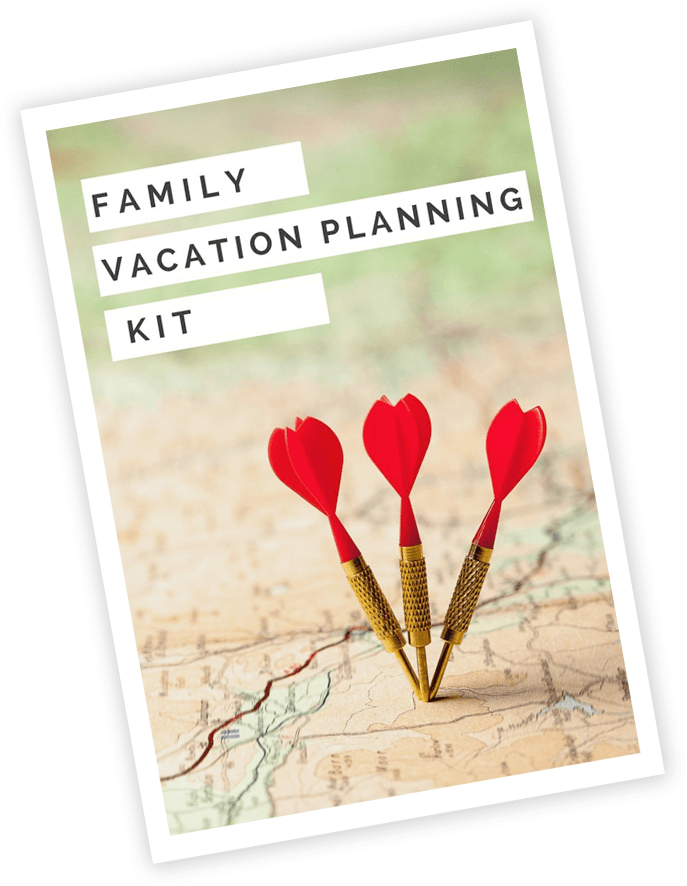America’s vast wilderness offers some of the world’s most breathtaking hiking experiences. From rugged mountain passes to otherworldly desert landscapes, these trails showcase nature’s grandeur in ways that will leave you speechless. Whether you’re planning your next outdoor adventure or dreaming of future conquests, these epic trails deserve a spot on your 2025 bucket list.
Teton Crest Trail – Grand Teton National Park, Wyoming
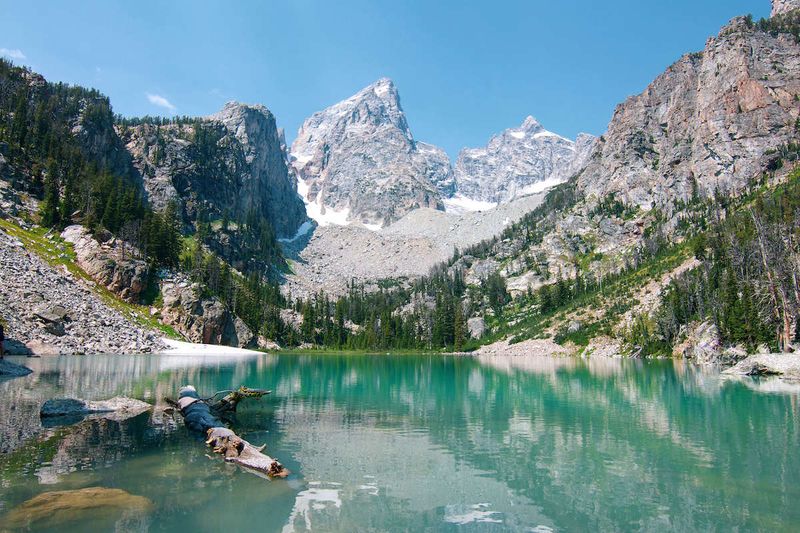
Jagged peaks pierce the sky as you traverse this legendary 40-mile backcountry route through Wyoming’s crown jewel. The trail meanders through wildflower-carpeted meadows and past emerald alpine lakes that mirror the dramatic Teton Range.
Summer hikers might spot moose grazing in marshy areas or black bears foraging for berries. The trail’s high point at 10,700 feet delivers panoramic views that will make your lungs burn and your heart soar.
Most backpackers tackle this adventure over 4-5 days, camping at designated sites that require permits secured months in advance. The best time to hike is July through September when mountain passes are typically snow-free and the wildflowers create a painter’s palette across the landscape.
Art Loeb Trail – Pisgah National Forest, North Carolina
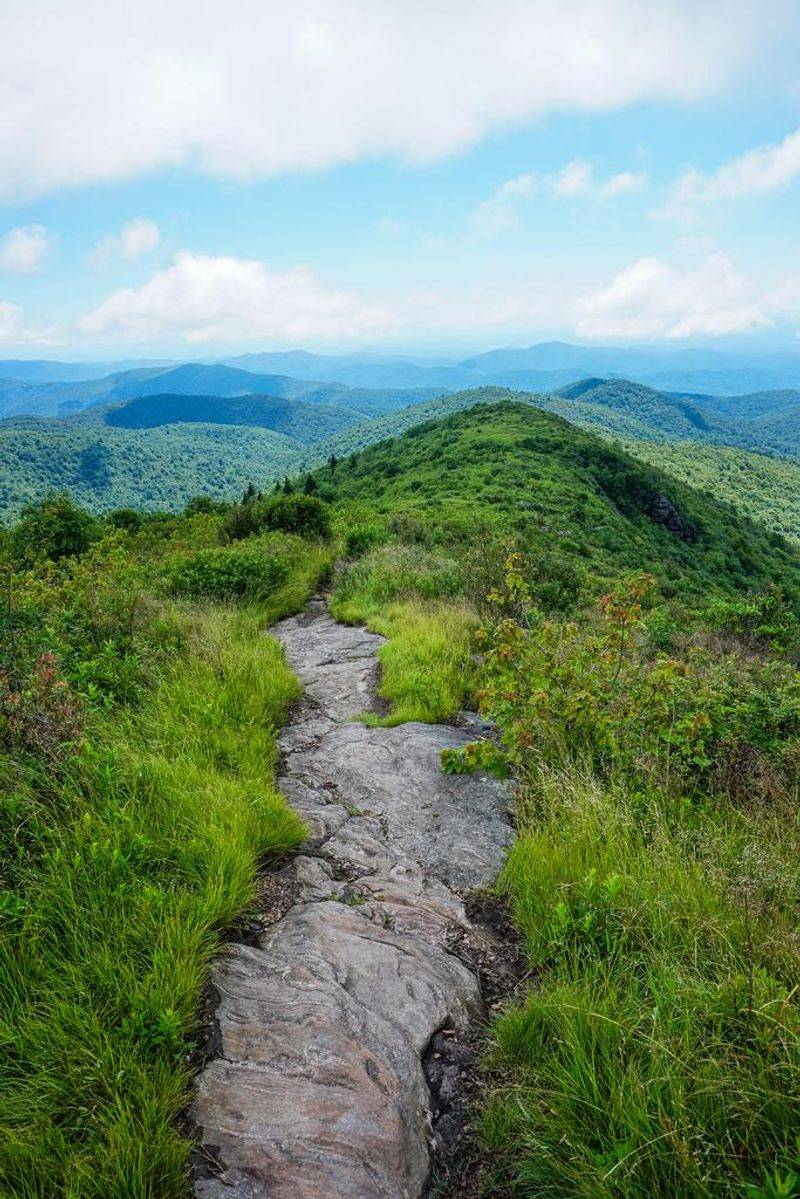
Rising and falling along the spine of the Blue Ridge Mountains, this 30-mile footpath offers a quintessential Appalachian experience. Named after a local hiking enthusiast, the trail winds through diverse ecosystems from hardwood forests to grassy balds where 360-degree views unfold beneath your feet.
The challenging terrain includes four major peaks, with Black Balsam Knob standing as a highlight where hikers emerge from dense forest onto open mountaintops. Weather here changes in an instant – clear blue skies can transform to misty cloud forests within minutes.
White blazes mark this path that attracts both section hikers and determined souls who complete it in a grueling single push. Fall brings spectacular foliage, while spring carpets the forest floor with wildflowers and flowering mountain laurel.
Highline Trail – Glacier National Park, Montana

Clinging to the Garden Wall along the Continental Divide, this 11.8-mile path delivers heart-stopping beauty with every step. Mountain goats navigate nearby cliffs with casual grace while hikers clutch the hillside, gazing down at glacier-carved valleys stretching toward the horizon.
Early summer transforms the alpine meadows into a riot of color as beargrass, Indian paintbrush, and glacier lilies compete for attention. The trail’s exposed position means you’ll feel dwarfed by nature’s grandeur – massive mountains on one side, sweeping valleys on the other.
Grizzly bears call this area home, making bear spray an essential companion. Many hikers arrange shuttle transportation, starting at Logan Pass and ending at The Loop for a primarily downhill journey. The trail’s relatively moderate grade belies its high-altitude challenges.
Angels Landing – Zion National Park, Utah
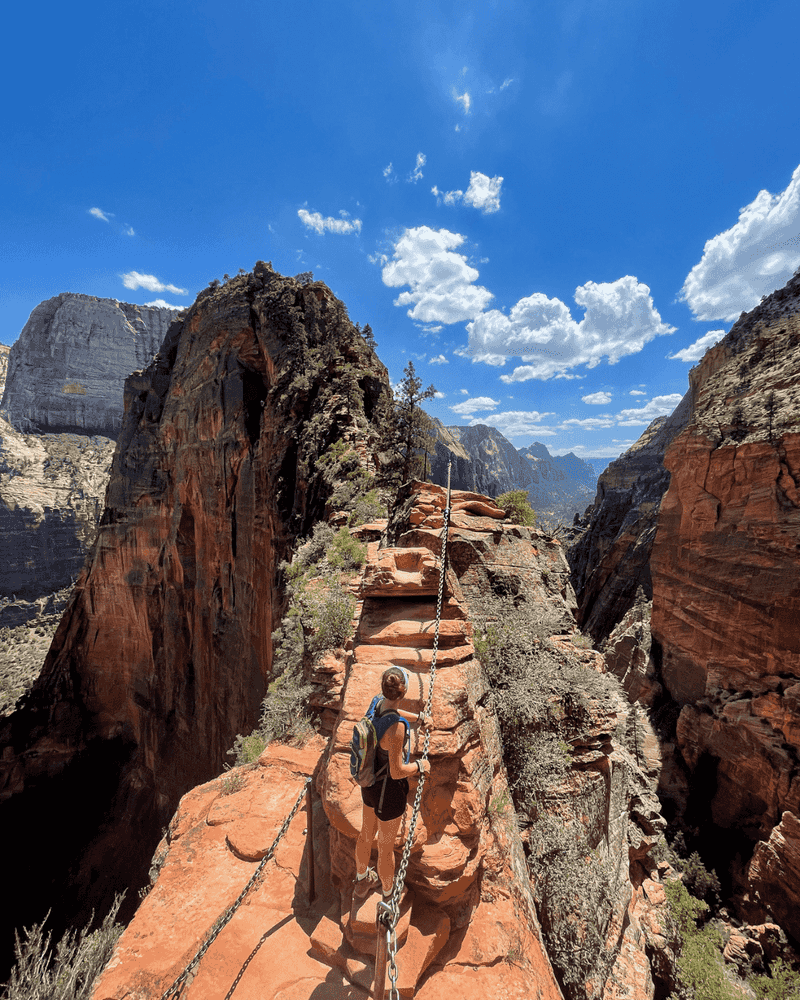
Not for the faint of heart, this 5.4-mile round-trip adventure culminates in a knife-edge ridge walk where chain handrails are all that separate hikers from thousand-foot drops on either side. The trail begins innocently enough at the West Rim Trail before climbing a series of 21 steep switchbacks aptly named Walter’s Wiggles.
After conquering Scout Lookout, the truly brave continue to the final half-mile stretch along a narrow sandstone fin. The physical challenge pales compared to the mental fortitude required to navigate sections barely five feet wide with sheer cliff faces plunging on both sides.
Your reward? Arguably the most spectacular viewpoint in the park, with the Virgin River snaking through the canyon floor far below. A permit system implemented in 2022 has reduced crowds, making the experience more enjoyable for those lucky enough to secure a spot.
Half Dome – Yosemite National Park, California
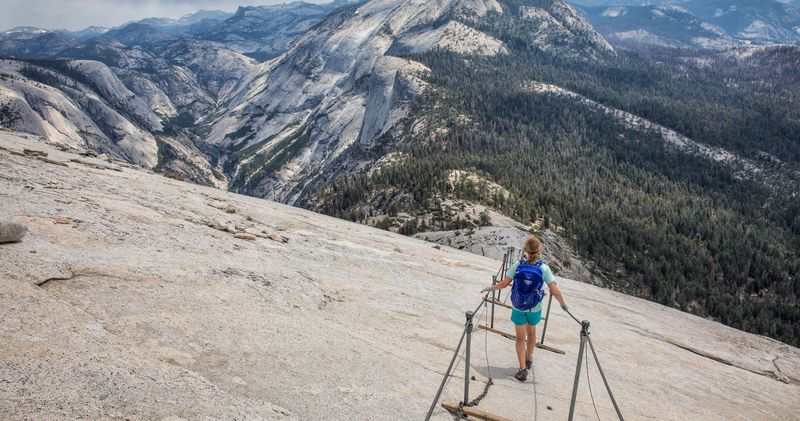
Rising nearly 5,000 feet above Yosemite Valley, this granite monolith beckons to adventurers seeking the ultimate Sierra Nevada challenge. The 14-16 mile round-trip journey tests both physical endurance and mental resolve, especially during the final cable-assisted climb up the dome’s slick surface.
Morning darkness typically envelops early starters who begin at the Mist Trail, passing the thundering Nevada and Vernal Falls. The path continues through fragrant pine forests before emerging at Sub Dome, where the infamous cables come into view.
Two metal cables create a makeshift handrail system allowing hikers to pull themselves up the 45-degree granite face. Gloves are essential for gripping the cables, while proper footwear prevents dangerous slips. The summit’s breathtaking panorama encompasses Yosemite Valley, High Sierra peaks, and the distant Nevada desert – a view that makes every step worthwhile.
Taft Point – Yosemite National Park, California

While Half Dome commands attention, this lesser-known 2.2-mile round-trip hike delivers equally spectacular views without the crowds or permit requirements. The relatively flat trail meanders through fragrant Jeffrey pine forest before suddenly opening to a jaw-dropping clifftop overlook.
Vertical fissures called ‘The Fissures’ slice through the granite edge, creating narrow chasms that plunge straight down 3,000 feet. Brave souls peer over the unfenced cliff edge for unobstructed views of El Capitan, Yosemite Falls, and the entire valley floor spread out like a living map.
Sunset transforms this spot into a photographer’s dream as golden light bathes the valley and granite faces glow with alpenglow. The accessible nature of this hike makes it perfect for families or those with limited time, though proper caution near cliff edges remains essential. Visit on weekdays or during shoulder seasons to experience this wonder in relative solitude.
Wonderland Trail – Mount Rainier National Park, Washington
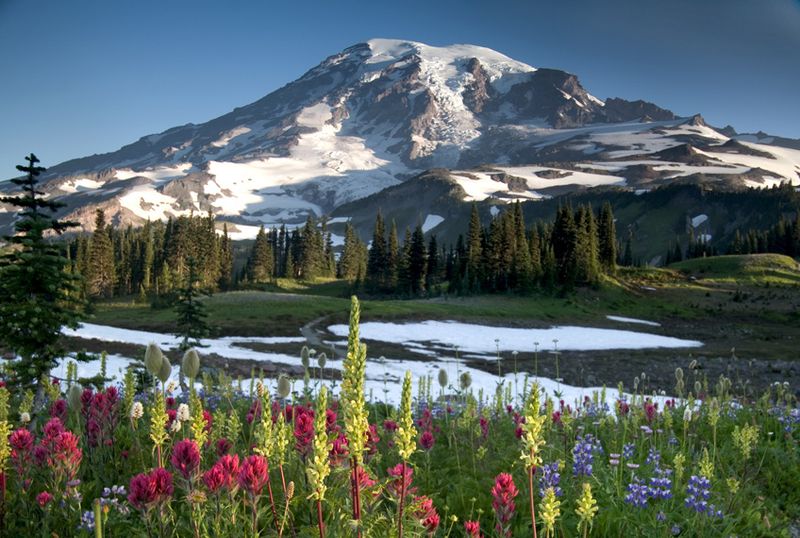
Encircling the massive stratovolcano of Mount Rainier, this 93-mile loop offers a complete immersion into Pacific Northwest wilderness. The trail’s constant ups and downs accumulate nearly 23,000 feet of elevation gain as it traverses through different ecosystems, from ancient forests to subalpine meadows and glacial moraines.
Hikers cross rushing glacier-fed rivers on log bridges while passing through valleys carpeted with lupine, paintbrush, and beargrass. The mountain itself remains a constant companion, changing its appearance as you circle its base, revealing different glaciers and features from each angle.
Most backpackers complete the journey in 10-14 days, staying at designated campsites that require advance reservations. The short season (July through September) means planning begins months ahead, with permits becoming available in March. Early season hikers might need ice axes for snow crossings, while late season brings wild huckleberries as a trail snack.
Appalachian Trail (Select Sections) – Eastern United States
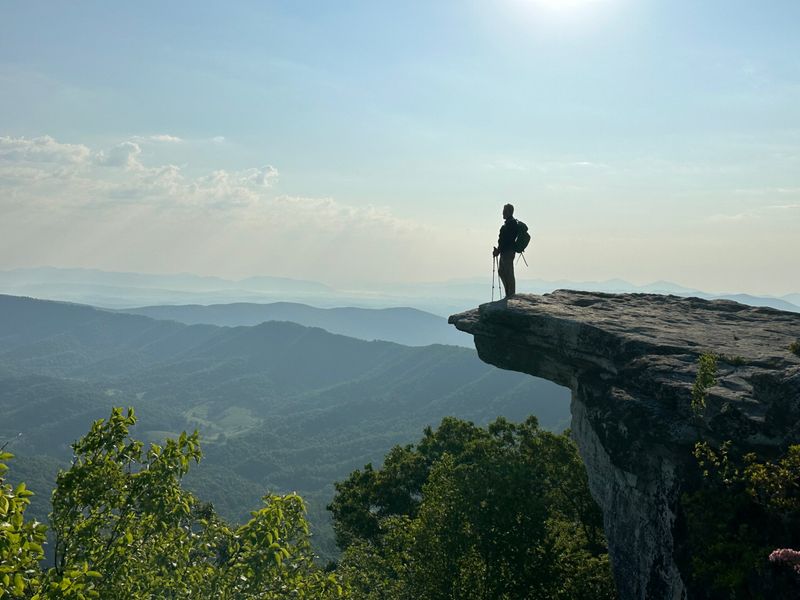
America’s most famous footpath stretches 2,197 miles from Georgia to Maine, but you don’t need to hike the entire thing to experience its magic. The McAfee Knob section in Virginia features the trail’s most photographed spot – a rock outcropping that seems to float above the Shenandoah Valley.
Further north, the Roan Highlands along the Tennessee-North Carolina border offer the longest stretch of grassy balds in the Appalachians. Here, 360-degree views and rhododendron gardens create a fairytale landscape during June blooms.
For the ultimate AT experience, Maine’s rugged 100-Mile Wilderness tests even seasoned hikers before culminating at Mount Katahdin, the trail’s northern terminus. This final climb involves scrambling up rock faces using iron handholds – a fitting finale to the epic journey. Each section has its own character, from Pennsylvania’s notorious rock gardens to New Hampshire’s challenging White Mountains.
Maah Daah Hey Trail – North Dakota Badlands
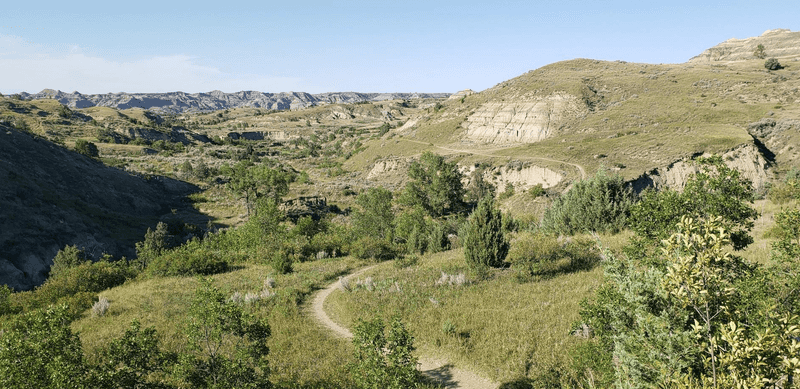
Carving through the otherworldly landscape of North Dakota’s Badlands, this 144-mile singletrack offers solitude rarely found on more famous trails. The name comes from the Mandan language meaning “grandfather” or “long-lasting” – fitting for a path that connects the north and south units of Theodore Roosevelt National Park.
The trail traverses an ever-changing terrain of prairie grasslands, juniper forests, river valleys, and the iconic striped buttes of the Badlands. Wildlife encounters might include bison herds, pronghorn antelope, bighorn sheep, and prairie dog colonies that stretch for acres.
Trail markers featuring a turtle symbol guide the way through this remote country where self-sufficiency is essential. Water sources are scarce, making careful planning crucial. While many mountain bikers tackle sections of this trail, hikers enjoy the advantage of truly absorbing the profound silence and star-filled night skies that define this hidden gem.
Delicate Arch Trail – Arches National Park, Utah
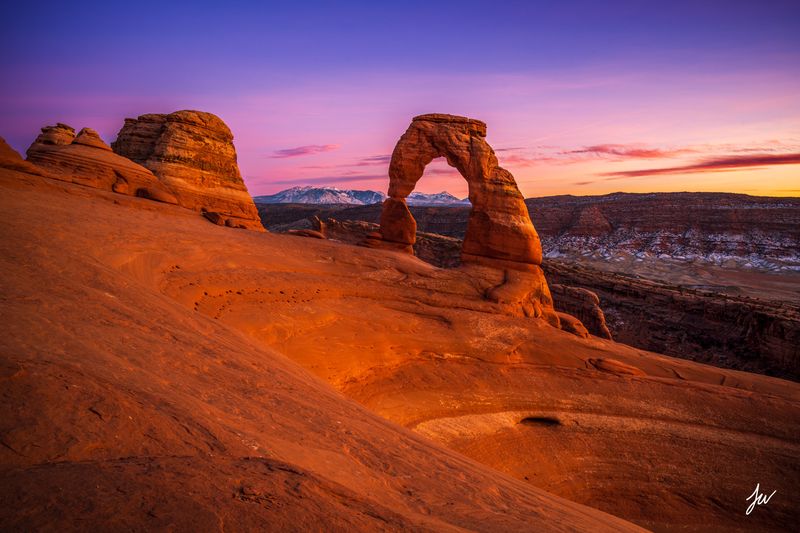
Standing beneath Utah’s most iconic natural feature provides a moment of pure wonder that photographs simply cannot capture. The 3-mile round-trip journey to this freestanding 52-foot sandstone arch crosses slickrock terrain that resembles a Martian landscape.
The trail begins easily enough at Wolfe Ranch, where 100-year-old pioneer cabins and ancient petroglyphs provide historical context. Soon after, hikers ascend an open slickrock slope with no shade – a challenging stretch during summer months when temperatures regularly exceed 100°F.
The final approach follows a narrow ledge carved into a sandstone wall before the trail suddenly opens to reveal the massive arch framing the La Sal Mountains beyond. Sunset brings the sandstone to life as it glows in brilliant oranges and reds. Despite being one of the park’s busiest trails, the experience of standing beneath this gravity-defying formation remains profoundly moving.
The Wave – Coyote Buttes North, Arizona/Utah Border
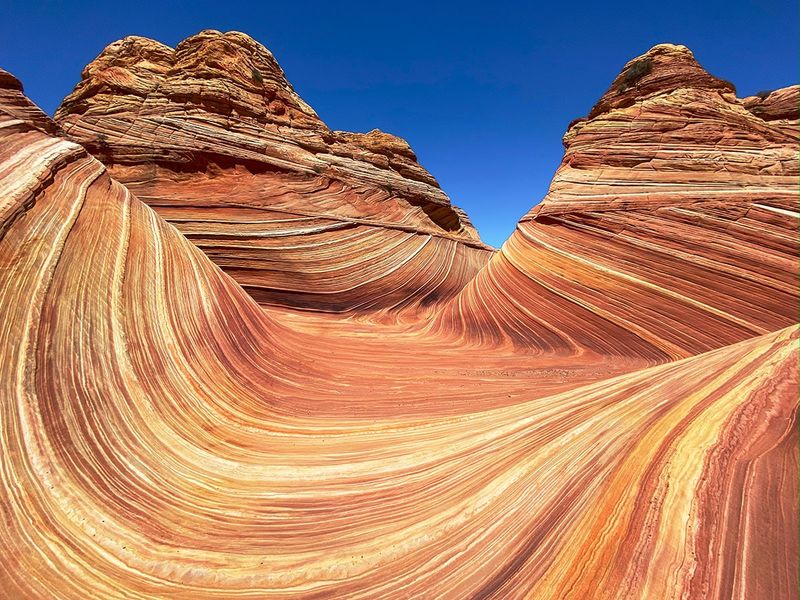
Hidden within the remote Paria Canyon-Vermilion Cliffs Wilderness lies a geological masterpiece that seems designed by an artist’s hand. Swirling sandstone formations create a mesmerizing pattern of undulating waves frozen in rock, their red, orange, and yellow bands telling a 190-million-year-old story of ancient sand dunes.
Access to this fragile wonderland is strictly limited, with only 64 permits issued daily through a highly competitive lottery system. Those fortunate enough to secure permission must navigate an unmarked 6.4-mile round-trip route across open desert using GPS coordinates or detailed maps.
No established trail exists, adding to both the adventure and the preservation of this delicate environment. Summer brings dangerous heat that can exceed 100°F with no shade available. The payoff comes in the form of otherworldly beauty and the privilege of experiencing one of America’s most photographed yet least visited natural wonders.
Kalalau Trail – Na Pali Coast, Kauai, Hawaii

Hugging the dramatic emerald cliffs of Kauai’s Na Pali Coast, this 11-mile trail delivers tropical paradise with a healthy dose of adventure. The path traverses five valleys and countless streams while offering unparalleled views of the Pacific Ocean crashing against towering sea cliffs.
The journey begins at Ke’e Beach and quickly gains elevation, revealing sweeping coastal panoramas that stop hikers in their tracks. Crossing Hanakoa Stream at mile 6 marks the halfway point, where many choose to camp before continuing to the remote Kalalau Beach – a pristine stretch of sand accessible only by foot or boat.
Narrow sections with sheer drop-offs, particularly at Crawler’s Ledge around mile 7, demand careful footing. The trail’s tropical setting means rain can transform paths into slippery mud slides without warning. Permits are required for overnight trips, and the limited number available makes securing them a challenge worth the effort.
Bright Angel Trail – Grand Canyon National Park, Arizona
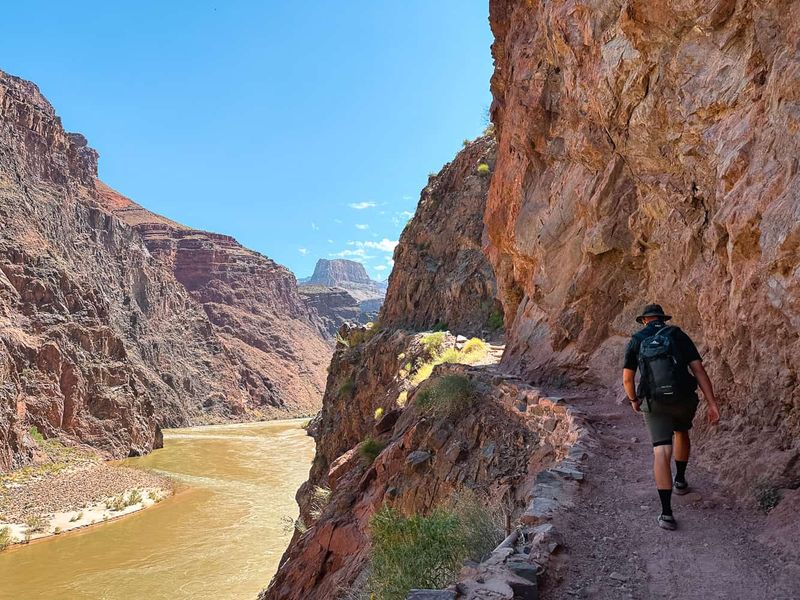
Descending into Earth’s most famous chasm on this historic path offers a journey through two billion years of geological history. The well-maintained 9.5-mile trail (one-way) switchbacks from the South Rim to the Colorado River, dropping 4,380 feet through distinct rock layers that change color and composition as you descend.
Unlike many Grand Canyon hikes, Bright Angel features reliable water sources at rest houses spaced along the route. The trail follows a natural break in the canyon wall used by indigenous peoples for centuries before being developed into a tourist route in the 1890s.
First-time canyon hikers often underestimate the challenge of the return journey – remember that every step down requires an uphill step back. Park rangers recommend day hikers turn around at 3-Mile Resthouse or Indian Garden. Those continuing to the river should plan an overnight stay at Phantom Ranch, where advance reservations are essential and often secured 13 months ahead.



